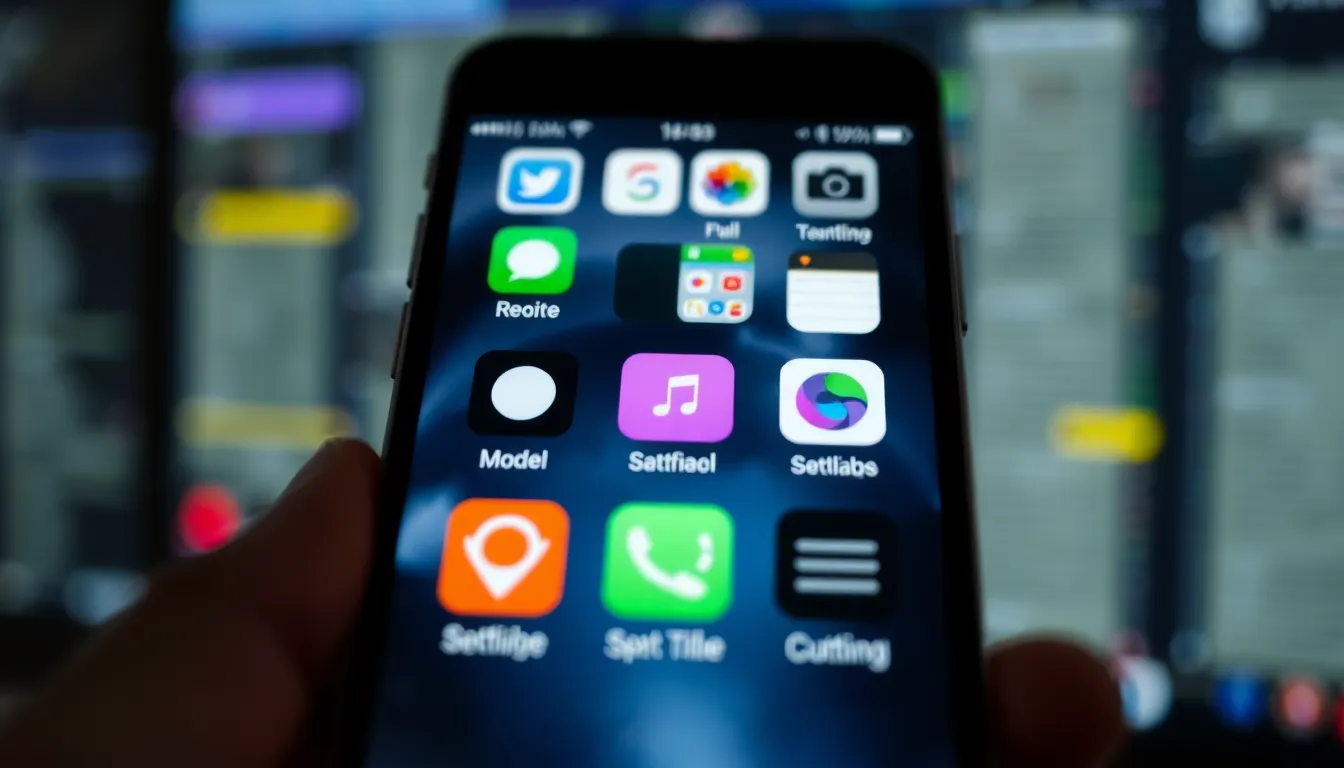In a world where smartphones are practically an extension of ourselves, the last thing anyone wants is a sneaky virus hitching a ride on their iPhone. Picture this: you’re scrolling through your favorite memes when suddenly your phone starts acting like it’s possessed. Not the kind of horror movie moment anyone signed up for!
But fear not! Just like a superhero swooping in to save the day, knowing how to check for viruses on an iPhone can keep your device safe and sound. With a few simple steps, you can kick those pesky intruders to the curb and reclaim your phone’s glory. So, let’s dive into this digital detective work and ensure your iPhone stays virus-free, because who needs drama when your biggest concern should be finding the perfect GIF?
Table of Contents
ToggleUnderstanding iPhone Viruses
iPhone viruses do exist, though they are less common compared to other devices. Users often misunderstand the nature of these infections, believing them to originate primarily from app downloads. Malware can infiltrate through phishing emails, malicious websites, and compromised apps.
Identifying symptoms is crucial. Slow performance, unexpected crashes, and unusual pop-ups can indicate a virus. Users might also notice unauthorized data usage or unfamiliar apps appearing on their devices.
It’s important to remember that Apple’s iOS has robust security features. These mechanisms often protect devices from traditional viruses. Current operating systems are designed to restrict unauthorized access and manage apps effectively.
While the chances of encountering a virus are low, they are not zero. A careful approach to downloading apps and clicking links helps tremendously. Regularly updating the iOS prevents vulnerabilities from being exploited by potential threats.
Staying informed about the latest threats offers additional protection. Cybersecurity threats evolve constantly, making it essential to remain vigilant. Knowledge of common phishing tactics can help prevent potential infections.
Using reputable antivirus or security applications provides another layer of defense. Although Apple’s App Store has stringent guidelines, not all apps guarantee security. Security software designed for iPhones can offer real-time scanning and alerts for suspicious activity.
Users should be proactive in monitoring their devices. Taking preventive measures helps ensure a smoother and safer iPhone experience.
Signs Your iPhone May Be Infected

Identifying signs of a possible virus infection on an iPhone can help users act quickly. Watching for specific symptoms reveals potential issues.
Unusual App Behavior
Apps might start behaving strangely if an iPhone is infected. Unresponsive applications can indicate underlying problems. Users may notice random crashes or forced closures of apps, disrupting daily tasks. Unwanted app installations also signal infection, where unfamiliar apps appear without user consent. Malicious software can manipulate regular apps, leading to altered features and unexpected advertisements. Monitoring app behavior closely helps catch these red flags early.
Battery Drain Issues
Excessive battery drain can serve as a warning sign of a virus. An iPhone exhibiting rapid battery loss may harbor malicious software running in the background. Devices should maintain typical battery longevity, so sudden drops warrant attention. Users may experience increased heat during regular use, suggesting that background processes are working harder than normal. Checking battery usage statistics can help identify suspicious activity tied to unauthorized apps. Keeping an eye on battery performance provides insights into the phone’s health.
Effective Methods to Check for Viruses
Checking for viruses on an iPhone involves utilizing several effective methods to ensure device security and performance.
Using Built-in iPhone Features
Apple’s iOS offers built-in features that assist in virus detection. Users can check for unusual behavior by reviewing app performance. Unfamiliar apps on the device may indicate malware presence, warranting further inspection. Monitoring for excessive data usage also helps identify potential threats. The Settings app allows users to manage apps and check for unusual settings changes. Regularly updating iOS enhances built-in security features, reducing vulnerabilities to attacks. Following these steps can significantly reduce exposure to viruses.
Third-Party Antivirus Apps
Several reputable antivirus apps provide additional security for iPhones. Bitdefender, Norton, and McAfee offer comprehensive scanning tools. Users can utilize these applications to scan for malicious content and remove threats. Regular scans help maintain device performance and security. Making sure to choose trusted apps from the App Store ensures better protection. Some applications provide real-time monitoring features, alerting users to potential risks. Overall, dedicated antivirus apps can enhance the security framework of an iPhone.
Steps to Remove Viruses from Your iPhone
Removing viruses from an iPhone involves several effective methods. Users often start with a simple device restart, which can resolve minor glitches and refresh the system.
Restarting Your Device
Restarting the iPhone may eliminate temporary issues linked to virus symptoms. To restart, press and hold the side button until “slide to power off” appears. Sliding it turns off the device completely. After the iPhone shuts down, waiting a few seconds allows it to reset properly. Restarting can restore normal functionality and provide a clean slate for further checks.
Factory Reset Options
Performing a factory reset erases all content and settings, effectively removing any viruses. Users should back up important data before proceeding. To initiate a factory reset, navigate to Settings, then General, and select Reset. Choosing “Erase All Content and Settings” prompts confirmation. Once confirmed, the iPhone returns to its original factory state. This step ensures complete removal of unwanted software, enhancing device security and performance.
Preventative Measures for Future Protection
Being proactive forms the best defense against potential threats on an iPhone. Regular software updates are essential, as Apple frequently releases patches that improve security. Users should activate automatic updates to ensure they always run the latest iOS version without manual effort.
When it comes to app downloads, selection matters significantly. Opting for well-known apps from the App Store reduces the risk of encountering malicious software. Researching user reviews can help identify reputable applications before installation.
Maintaining overall device security requires vigilance as well. Avoid opening suspicious links in emails or text messages, since phishing attempts often target iPhones. Phishing can lead to personal data theft and other security risks.
Regularly reviewing app permissions adds another layer of protection. Check which apps have access to sensitive data and features, such as location or contacts. Revoking unnecessary permissions minimizes potential misuse of data.
Using strong passwords and enabling two-factor authentication can safeguard accounts linked to the iPhone. Complex passwords enhance security, while two-factor authentication adds an extra verification step during logins.
Antivirus apps provide an additional level of defense. Trusted options like Bitdefender, Norton, and McAfee deliver routine scanning and real-time protection. Selecting a reliable antivirus app ensures consistent monitoring of potential threats.
Finally, adopting safe browsing habits contributes significantly to overall security. Heed warnings from browsers about unsecured sites, and avoid downloading files from untrusted sources. Educated surfing habits suffice in keeping the device safe from infections.
Keeping an iPhone free from viruses is essential for optimal performance and security. By remaining vigilant and adopting proactive measures users can significantly reduce the risk of infection. Regular updates and careful app management play a crucial role in maintaining device integrity.
Utilizing built-in iOS features and reputable antivirus apps can further enhance protection against potential threats. Users should also pay attention to any unusual behavior on their devices as early detection is key to preventing more serious issues.
With these strategies in place users can enjoy a safer and more reliable iPhone experience.








